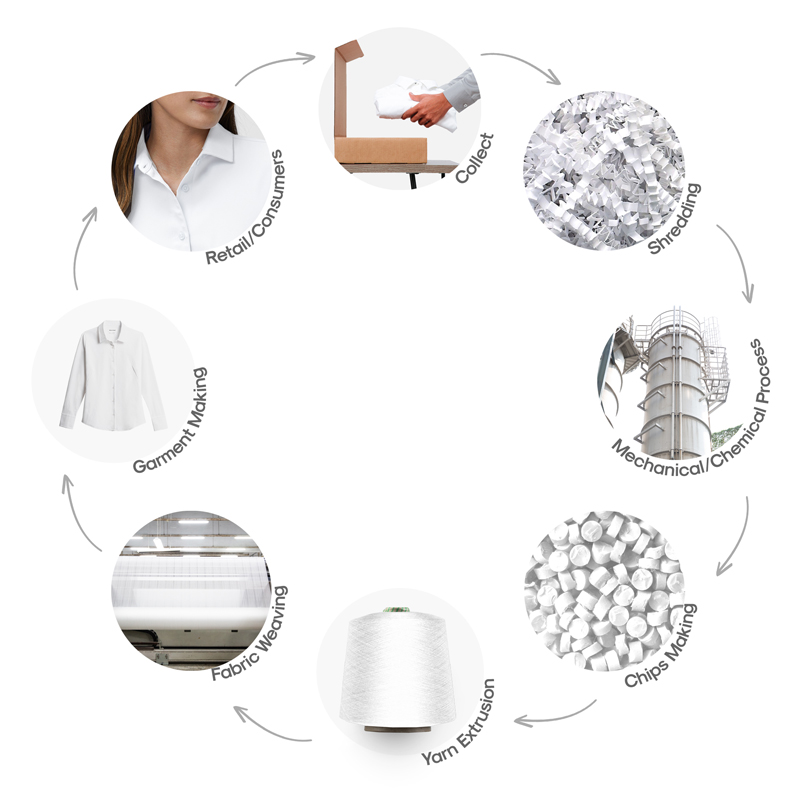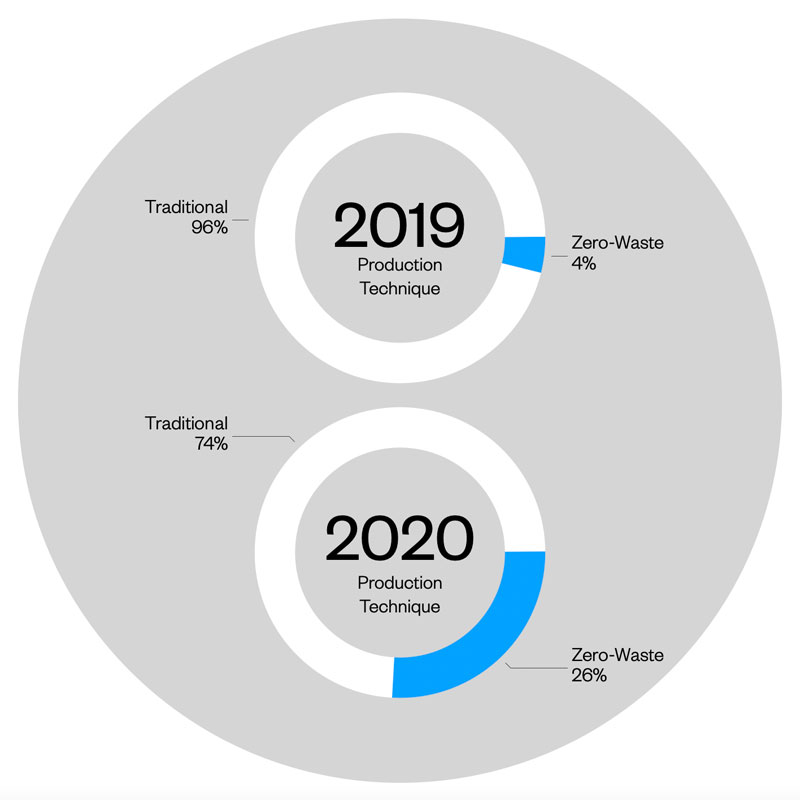Apparel production is resource intensive, and over half of the resources and energy used go in to the fabric. Traditional patterns are cut and sewn from a larger roll of fabric, over a third of which ends up wasted on the cutting room floor.
34%
FABRIC WASTED IN TRADITIONAL CUT & SEW
We’re tackling this in two innovative ways—through advanced fiber processing that recycles scraps from production, and a computerized knitting process that only uses the yarn necessary for the final product.
Our Goal?
Zero Waste.


Computerized Knitting
We use advanced computerized knitting techniques to create garments directly from yarn. This is known as additive manufacturing—similar to 3D printing. Our 3D Print-Knit garments come straight out of the machine as one piece, while our Atlas products are knit in shaped panels that require just a few seams to be linked. The result is garments made with nearly zero waste.
Garment and Scrap Recycling
Through our Infinityº program we’re able to recycle fabric scraps and worn/retired garment shirts that would normally be discarded into post-consumer products. The recycled fabric is chopped in to fine pieces, melted and extruded into filaments, re-spun into yarns, and then woven back into garmentº fabric that’s just as soft, strong and durable as the original.


Rapid Progress
Our zero-waste, additive manufacturing processes accounted for 26% of all units produced in 2020. 3D Print-Knit’s unique capabilities saved 34% of material that would have otherwise been wasted using traditional cut and sew, mitigating these material-associated emissions.
